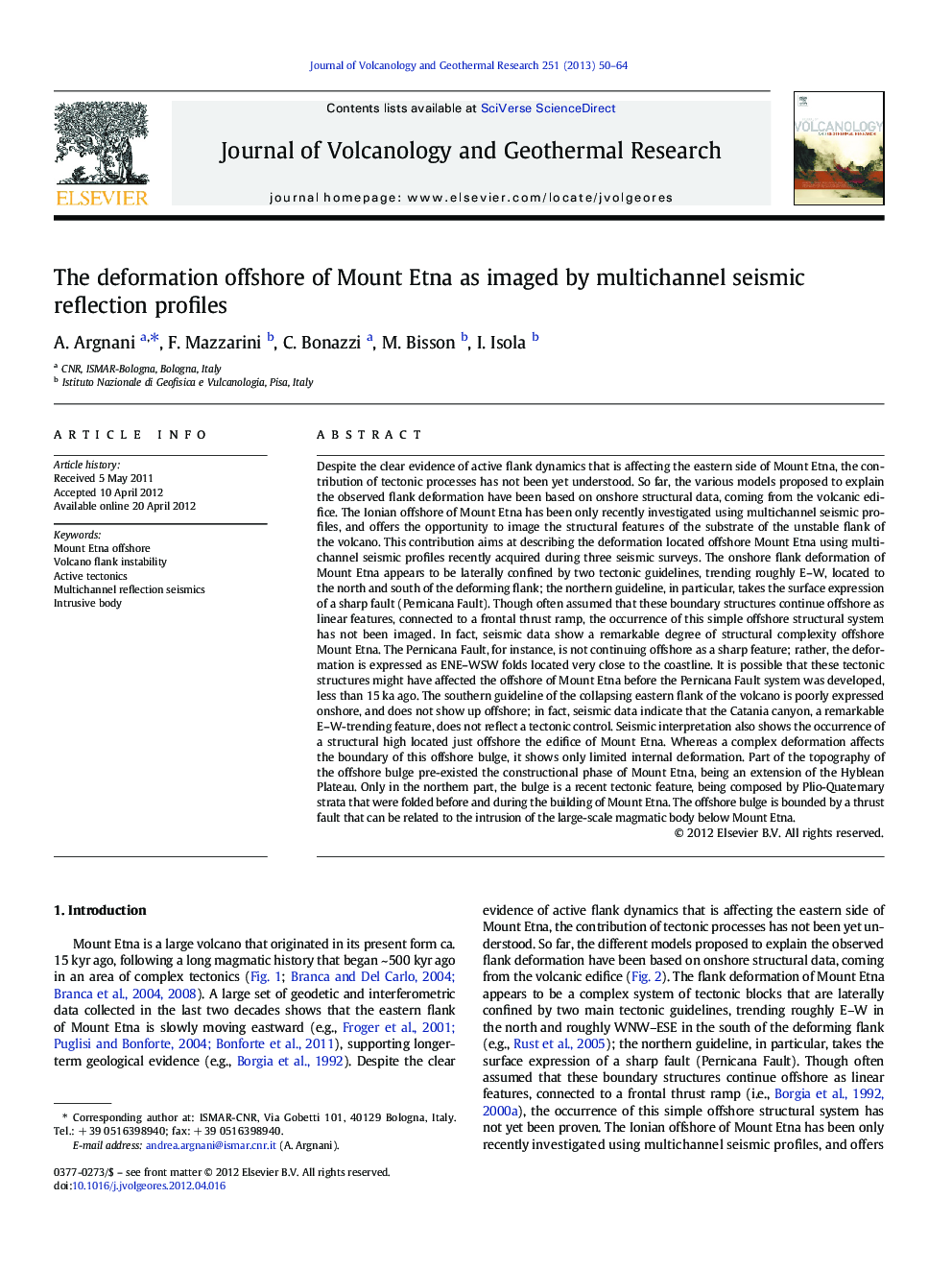| کد مقاله | کد نشریه | سال انتشار | مقاله انگلیسی | نسخه تمام متن |
|---|---|---|---|---|
| 4713199 | 1638370 | 2013 | 15 صفحه PDF | دانلود رایگان |

Despite the clear evidence of active flank dynamics that is affecting the eastern side of Mount Etna, the contribution of tectonic processes has not been yet understood. So far, the various models proposed to explain the observed flank deformation have been based on onshore structural data, coming from the volcanic edifice. The Ionian offshore of Mount Etna has been only recently investigated using multichannel seismic profiles, and offers the opportunity to image the structural features of the substrate of the unstable flank of the volcano. This contribution aims at describing the deformation located offshore Mount Etna using multichannel seismic profiles recently acquired during three seismic surveys. The onshore flank deformation of Mount Etna appears to be laterally confined by two tectonic guidelines, trending roughly E–W, located to the north and south of the deforming flank; the northern guideline, in particular, takes the surface expression of a sharp fault (Pernicana Fault). Though often assumed that these boundary structures continue offshore as linear features, connected to a frontal thrust ramp, the occurrence of this simple offshore structural system has not been imaged. In fact, seismic data show a remarkable degree of structural complexity offshore Mount Etna. The Pernicana Fault, for instance, is not continuing offshore as a sharp feature; rather, the deformation is expressed as ENE–WSW folds located very close to the coastline. It is possible that these tectonic structures might have affected the offshore of Mount Etna before the Pernicana Fault system was developed, less than 15 ka ago. The southern guideline of the collapsing eastern flank of the volcano is poorly expressed onshore, and does not show up offshore; in fact, seismic data indicate that the Catania canyon, a remarkable E–W-trending feature, does not reflect a tectonic control. Seismic interpretation also shows the occurrence of a structural high located just offshore the edifice of Mount Etna. Whereas a complex deformation affects the boundary of this offshore bulge, it shows only limited internal deformation. Part of the topography of the offshore bulge pre-existed the constructional phase of Mount Etna, being an extension of the Hyblean Plateau. Only in the northern part, the bulge is a recent tectonic feature, being composed by Plio-Quaternary strata that were folded before and during the building of Mount Etna. The offshore bulge is bounded by a thrust fault that can be related to the intrusion of the large-scale magmatic body below Mount Etna.
► Good-quality seismic profiles illustrate the geology offshore of Mount Etna.
► A high structural complexity has been recognized.
► Tectonics, magmatic intrusions, and gravity contributed in different ways to the observed deformation.
► Intrusion-driven deformation appears as the main contribution.
► Gravity-driven deformation occurred only late in the evolution of Mount Etna.
Journal: Journal of Volcanology and Geothermal Research - Volume 251, 1 February 2013, Pages 50–64